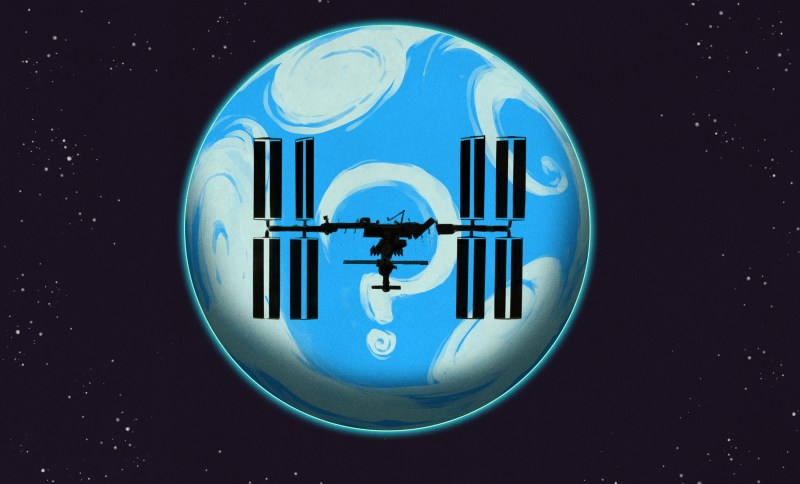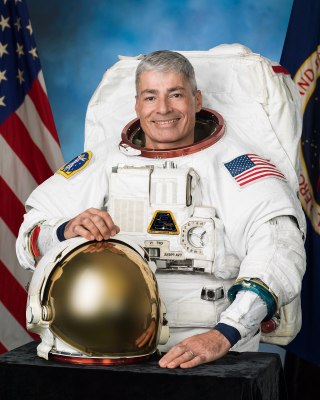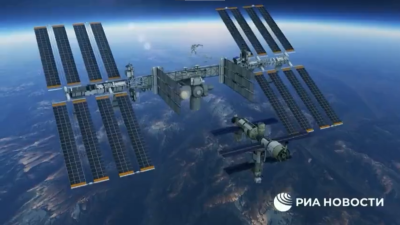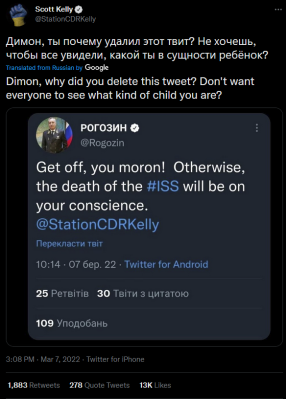
The International Space Station was built not only in the name of science and exploration, but as a symbol of unity. Five space agencies, some representing countries who had been bitter Cold War rivals hardly a decade before the ISS was launched, came together to build something out of a sci-fi novel: a home among the stars (well, in Low Earth Orbit) for humans from around the globe to work with one another for the sake of scientific advancement, high above the terrestrial politics that governed rock below. That was the idea, at least.
So far, while there has been considerable sound and fury in social media channels, international cooperation in space seems to continue unhindered. What are we to make of all this bluster, and what effects could it have on the actual ISS?
Politics and Tweets

A lot has changed in the 2.5 decades since the station’s first modules were launched into space. Political relationships that had had begun to slowly heal after the Cold War have been unraveling for years now, with Russia’s invasion of Ukraine being the latest catalyst for global discord. As a result, the ISS’s idealogical high ground is more in jeopardy today than it ever has been before.
The most recent challenge has come directly from Roscosmos, the Russian space agency. In a recent statement (in Russian, which I admittedly do not speak), Roscosmos head Dmitry Rogozin threatened to abandon American astronaut Mark Vande Hei on the station and detach the Russian modules to punish the US for newly-imposed sanctions.
Vande Hei is currently scheduled to depart the station in a few weeks via a Russian Soyuz capsule to end his record-breaking 355-day stay in space. After reentry, the capsule is slated to land in Kazakhstan before the passengers, Vande Hei and two cosmonauts, are ferried back to Baikonur Cosmodrome. Thankfully, Roscosmos recanted their threat before the cosmonauts tour out the third seat in their capsule, and promised to return Vande Hei back to Earth — but the threat of splitting up the station still lingers.
What is Possible?

The ISS is a modular beast. It was launched in pieces over the course of years, each piece different module of what would one day be a complete station. The final assembly consists of a US section (eight modules) and a Russian section (six modules), plus two Japanese modules and an European module. What Rogozin has threatened is to basically pack up and leave — to detach the Russian section and essentially back out of the international partnership. Roscosmos even made a rather unhinged video which shows the modules detaching and floating away. It’s not immediately clear whether the Russian section would be decommissioned and deorbited, or whether Roscosmos would somehow be able to turn the Russian section into its own independent station.
NASA has expressed disbelief of Russia’s ability to simply float off into the sunset and maintain an operational station. Last week, the head of NASA’s ISS program, Joel Montalbano, said that “the international Space Sation was designed to be interdependent, and together we work, it’s not a process where one group can separate and function.” The US section cannot function without Russia’s thrusters and fuel, and the Russian section cannot function without the US’s power and communications. It is, as Rogozin himself stated recently, “a family, where a divorce within a station is not possible”.

While it may seem like this takes the legs out from underneath the Russian threats, the interdependence makes them even scarier. If Roscosmos did make good on its word, the remainder of the ISS could have a difficult time maintaining its orbit — though Elon Musk has suggested (via Twitter, of course) that SpaceX could provide a solution (perhaps using Dragon 2 capsules?) to keep the ISS in orbit.
Twitter has played a unique role in many facets of the Russia-Ukraine war so far, and the space industry is no exception. Former astronaut Scott Kelly has been engaged in a Tweet-slinging battle with Dmitry Rogozin, in which Rogozin dropped yet another thinly-veiled threat implying that the ISS’s days may be numbered. He quickly deleted the Tweet, but not before Kelly screenshotted it for all to see, and questioned how Rogozin was even able to access Twitter, a site that the Russian government blocked earlier in the month.
Kelly also tweeted that he would be returning a medal he received from Russia “For Merit in Space Exploration,” writing “Please give it to a Russian mother whose son died in this unjust war. I will mail the medal to the Russian embassy in Washington. Good luck.”
For all of the saber-rattling coming from Roskosmos, NASA is taking it in stride. Administrator Jim Nelson said “That’s just Dmitry Rogozin. He spouts off every now and then. But at the end of the day, he’s worked with us.”
Tomorrow
All this talk about the station splitting up may have you wondering — how many years does it have left anyway?
Not as many as you might hope. The current plan is for the ISS to meet its fiery end at a watery grave in January of 2031, less than nine years from now. NASA and most other space agencies involved in the project have already agreed that they would work to keep the station alive until at least 2028, but even before tensions with Russia escalated recently, Roscosmos wouldn’t commit to supporting the station past 2024. With this context, the Russian threat to leave the ISS program early has really just been part of the Cyrillic writing on the station’s aging walls.
Losing Roscosmos as a partner in the international space community would be a setback to say the least, and would certainly end the ISS. For decades, space exploration and scientific advancement were some of the few things that brought Russia together with the US and Europe — the ISS’s crew complement was regularly made up of explorers from around the globe, all working and living together while hurdling around the Earth at 7.7 km/s.
In the near-decade between NASA’s Shuttle and Commercial Crew programs, US astronauts relied on Soyuz rockets for their ride into space, and Russian cosmonauts still routinely train at the Johnson Space Center in Texas. Russian and US/EU competencies complement each other, adding up to a bigger sum.The ISS has served as an aspirational beacon of global cooperation for over twenty years, and it would be a terrible shame and a colossal step backwards to the development of humankind to see the next generation of space stations built separately, rather than jointly.
0 Commentaires